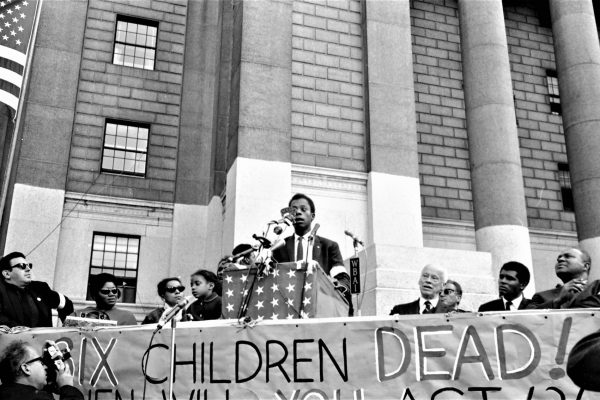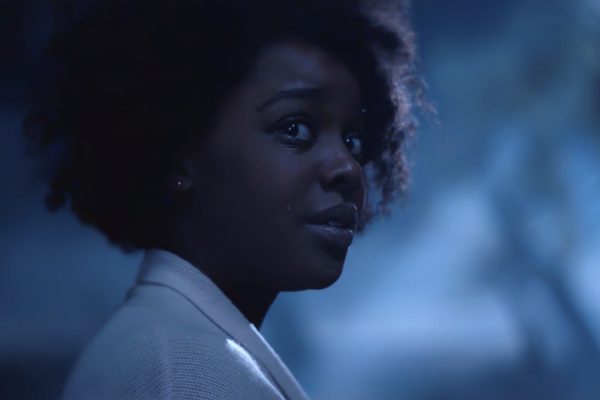I do not like coming back to the Bay Area. This is where the ghosts are, where I came of age, where I started learning some truths about myself, and where I told lies—lies meant to show what I wanted to be and become. This is where I made my first faltering attempts to connect with others, and where I failed and lost. I recognize these as queer tactics: the strategic truths and the mythmaking, the activism and resistance, the attempts and failures to connect. I see these same maneuvers in the broader community as we create memories that include some people and exclude others. The lies take a shape; they have a weight. If the lies do, then surely the lives do, too. I am haunted by the mistakes I’ve made and the people I’ve lost, even the ones forgotten over the years.
Goodbye.
Thank you.
You made an impact.
I want to touch you again.
We will miss you.
I wish future generations would meet you.
I wish I could remember what you sounded like.
In the United States, people have a hard time with the end of life. We do not see dying as a natural part of the life cycle. We have morgues where no one has to see the dead, funerals where no body is revealed. Morticians want pictures to see if they can return the body to its “best” state. Dying is something to put off, to fight until the last breath—as if struggle were proof of the value of the life.
When someone reveals that they are dying, we are shocked, unsure what to say or do. Is it OK to hug them? Do we talk about our own fear of death? How our friend’s absence will affect us? We want reasons for it—a cause brought on by something that we can avoid. Suicide is pathologized and not seen as an option. After the death, we say, “I’m sorry for your loss,” or, “Condolences,” and then stand in awkward silence. Sometimes we bring food.
I am from a generation of gay men who came of age well into the HIV epidemic. HIV/AIDS media coverage was both stigmatizing and tragic. When I wanted to handle another dick—anywhere on my body—I thought a condom was mandatory or I was doing something wrong. Was this piece of latex required for a blow job, for mutual masturbation, for bondage and role playing? The messaging was overwhelmingly, “Use a condom!” But it wasn’t clear what the parameters were. Dicks tasted and felt better without latex, but it felt risqué, producing anxiety. I went for HIV tests regularly, until my test came back positive in 1998 or ’99 (I can never quite remember). My capacity for friendship and intimacy emerged in the context of a dying generation. We learned how to attend funerals, to accept that some relationships go unresolved, and to say goodbye.
I met AIDS head on—in the bars and bathhouses, as lesions on the skin of men I slept with, and lying under the sweet nothings whispered in bed. I was living in fast-forward, trying desperately to have a life before I died.
Then Oakland and Berkeley were worlds apart from San Francisco (in many ways they still are). In Oakland, several Black gay and lesbian bars thrived, places where queer Black culture, music, and people were centered and celebrated. On weekends, there would usually be someone throwing a cookout, filled with family, neighbors, friends, and potential or ex-lovers. Across the Bay, the few spaces where people of color congregated seemed to mostly be about finding a white partner. The clubs were bigger in San Francisco, but the communities of color seemed smaller, more tightly concentrated in these spaces.
In the early 1990s, Black gay filmmaker Marlon Riggs was a professor at UC Berkeley and deep in his collaborations with his East Coast friends Essex Hemphill and Assotto Saint. Chicana lesbian playwright, poet, and essayist Cherríe Moraga taught intermittently at Berkeley, and Chicano gay sociologist Tomás Almaguer had pushed for the packed Sociology of Sexuality class there. The innovative LGBT periodical Out/Look was being published, and I eagerly sought every issue on campus. The faculty still remembered the turbulent social movements of the 1960s and ’70s; many of them were already teaching or active in the movements then. There were small independent presses and bookstores that carried writings from a diverse range of feminists, theorists, community organizers, and survivors. It was entirely possible to read the entirety (or close to it) of LGBT literature in the United States. I was fascinated by the people behind the images of lesbian and gay life at the time: the men in porn, the models featured in gay or lesbian calendars, as well as those in the International Male catalog. Who were they? What kinds of people did they date? Would they like me?
When I see the master narratives of AIDS history today, I cannot find my friends. We did not appear on the covers of gay media or in the burgeoning HIV media worlds. The records of people of color, especially queer people of color, remain beyond the scope of much of this work. History remains a mostly white endeavor. So I remember.
Carmen and I came out to the Oakland gay bar the White Horse when we were twenty. Goofy, mixed race, holding fake IDs—we were sure we were cute, or we tried to look that way. Through the years together, we dated near each other, sometimes overlapping, always friendly. After Carmen’s transition, we spoke less as our identities settled in other places. We still kissed hello, would share a cocktail, but our paths diverged. I cheered Carmen on when she started performing at the Sunday show. I did not know how to cope with her death at twenty-three in 1994. She had a fierceness and beauty that attracted the sexiest men in the bar. She would walk fearlessly in the day through the downtown mall, turning heads and marching through the whispers and catcalls. I wanted to be her, but she was larger than me: her life was full of elaborate sets and melodramas. Carmen could have been her own opera.
Darren was a middle-school teacher. He was tall and thin like a willow; his hands were long and spindly, from his grandmother, he told me. A sweet, attractive, conservatively dressed man who hung out with a group of lesbians; only a few gay men bitterly claimed to have dated him—and these were mostly Asian or Latino. At that age, I lit up when I discovered a guy’s multiracial romantic history because it meant I had a chance. I pursued Darren mercilessly until one night, when his friend was having sex with my roommate, he sat in my room. He wouldn’t let me near him: we sat on opposite parts of the bed, naked, furiously masturbating, while we talked about the things we wanted to do. His best friend had died of AIDS, he told me, so this was the only sex he had. We never spoke again outside of casual greetings. I looked at his stream of Latino and Asian guys with pity after that.
Vince brought me into the HIV industry—at first, just volunteering to support weekly HIV education events before landing a full-time job of my own. He’d always been his own kind of man, unpredictable in his conversations, choices, and moods. Once a waiter and a massage therapist, until finding himself widowed in San Francisco, and then working in HIV. He took me on my first trips cross-country as a gay man—to D.C. for the 1993 March on Washington, and later to New York. We started dating because I looked like he did at my age, a resemblance that all his friends would comment on. We both had a dating history of racial difference; it was weird finding the sameness sexy—the smoothness, the hair, the gawkiness and floppiness, even the love of comic books. For a year, we did.
Leon was a remarkable liar. Everyone he dated knew a different story about him: he was a gangster, he dealt drugs, he used to be a fashion model, he used to date a celebrity. For me, he said he was a mixed-race Black and Filipino man. He came with me to a few college parties; we had sex a lot. He claimed me in ways that were charming to me then: “My man,” “Baby,” “All mine.” A few years later, a friend was going through my photo album and found a series of pictures with Leon. “Oh, you dated him, too? You know he died?” After checking with a few others, it turned out that Leon had passed in the same web of stories that I had known him to spin: he was homeless, no one claimed the body, his family didn’t have a funeral, he was back to dating women.
I did not know what I was doing in sex. It was new and strange; I was too used to being an awkward boy to be cute or sexy, or any one of a number of things that seemed so easy for others. My lessons came from people in my orbit. Carmen taught me how quickly people forget, no matter how big your living is. From Darren, I saw the cost of fear, and the need for touch. From Vince, I was inspired to be in the world, to venture across it. From Leon, I realized that everyone has a version of you, and most never bother to learn more. There are vague impressions of other people behind how I do things, paths I’ve been down, and falls I’ve recovered from.
These ghosts come forward when I think about the ’90s. They get more solid as I recall the pre–social media past. I promise to do more, to create interventions in history so that their lives, and our moments together, continue to exist. I have never sown a quilt panel; I tell the stories over and over. So many people I know, so many I had never met. I want to hold sacred the spaces where we danced, where we found and even failed each other.
A 2013 email from a peer who moved across country:
I am SO glad this is over. . . .I am also regretful about many choices I have made in particular the last 5 years but grateful you tried in small and big ways to offer loving support; it made HUGE difference making it as far as I did.Ultimately there was too much pain and baggage to extricate and try to fix and/or ameliorate. I will miss all the fun and transcendent experiences we shared together. Please cherish those and keep them close to your heart, as I will ALWAYS!!!With love and admiration till we meet again. . . .
My partner and I considered him a friend: he was, in fact, the person who had introduced us. We phoned him immediately. He was loopy, obviously high. He talked about the clear sky and bright sun, the sound of children playing in the background. It was enough, he said, life is enough. I soothed him, then asked for confirmation. He said he was sure—this is it, goodbye—then he hesitated. We spoke about the children playing and the park he was in. “Help,” he pleaded, changing his mind even as he felt himself slipping from the drugs already in his system. I had my partner keep him on the phone while I worked on getting first responders to him. He spent the next month in a treatment facility.
After the incident, my partner looked at me with anger, disgust, and horror. “You would have let him die? You’re a monster!” He was nearly yelling.
“I was respecting his choice,” I tried to explain. “This is the third time he’s called me like this.”
We argued. “I can’t want him to live more than he does,” I said, exasperated. “No one can do his life for him.”
My partner, seven years younger, did not have the same experiences I had of weekly funerals and drag shows to raise money for them. “Would you do that to me if I was dying? Just let it happen?”
I sighed. “If that was what you wanted.”
He took the dogs for a long walk, needing some space from me. I do not think he will ever forgive me for my honesty; our relationship ended soon after.
With love and admiration till we meet again.
At some point, people began turning to me in an emergency: family rejection, an accident, a vandalized car, a robbery, a beaten lover, an eviction, an overdose, impostor syndrome meltdown, any of the myriad troubles that come from being a queer person of color in the United States. Listening became a practice, rehearsed until my body was still, carefully unfazed, regardless of the news. Some people just want contact, a moment to stabilize in the chaos. There is power in a hug—to, as Hemphill writes in one poem, “hold tight gently.” We are more than one, yet so often we are split.
I can’t hold on to everyone; none of us can. There are losses and damages that are beyond our arms. When our friend sent that email, did he expect me to save him? Or had he made peace with this ending? Suicide was familiar to him, so his choice was not unexpected. His email signaled both his need for help and his farewell. It was sent to a group; I was the only one who called.
Does the way I responded make me a monster? For my partner, it was the beginning of a growing disgust with me. My sense of humor has a sinister edge. I find deaths interesting in ways that make others uncomfortable. There is a coldness to my crisis responses. For my generation of gay men, I’ve found this to be normal. Our experience in the HIV epidemic produced specific understandings of health, sex, loss, government neglect, stigma, and community. Calling us monsters denies that AIDS happened in the way that it did, that the epidemic continues to thrive in Black, brown, and poor communities because the HIV response did not change the world for everyone. The movement surrendered the need for structural change around racism, homophobia, and capitalism and instead settled for neoliberal solutions that included HIV medication. If we be monsters, then I bid farewell to notions of civility and respectability.
Each era of HIV has particular characteristics that impact the ways that we come to know our bodies and each other. For me, the early ’90s in the Bay Area taught me to value touch, to sit with disgust, and to commemorate events and people before we fade away. For a decade, whenever I returned to the Bay Area, I was greeted on the street and in bars with, “Girl, I thought you died.” At some point this stopped because those familiar with me had either passed or moved away from the gentrified city. But the memory lingers.
We are a generation of witnesses, and this weight shapes how we love, how we fight, and how we break away. I hold this personal version of an AIDS memorial within. It comes between me and other relationships. I know what loss means; I approach people knowing I will say goodbye.
I do not know if I will ever be comfortable in the Bay Area. This city discomfits me. It is where the ghosts are, for me. And until I find a way to make peace with those missing, I remain haunted.
Reprinted with permission from Between Certain Death and a Possible Future: Queer Writing on Growing Up with the AIDS Crisis, edited by Mattilda Bernstein Sycamore (Arsenal Pulp Press, 2021).






